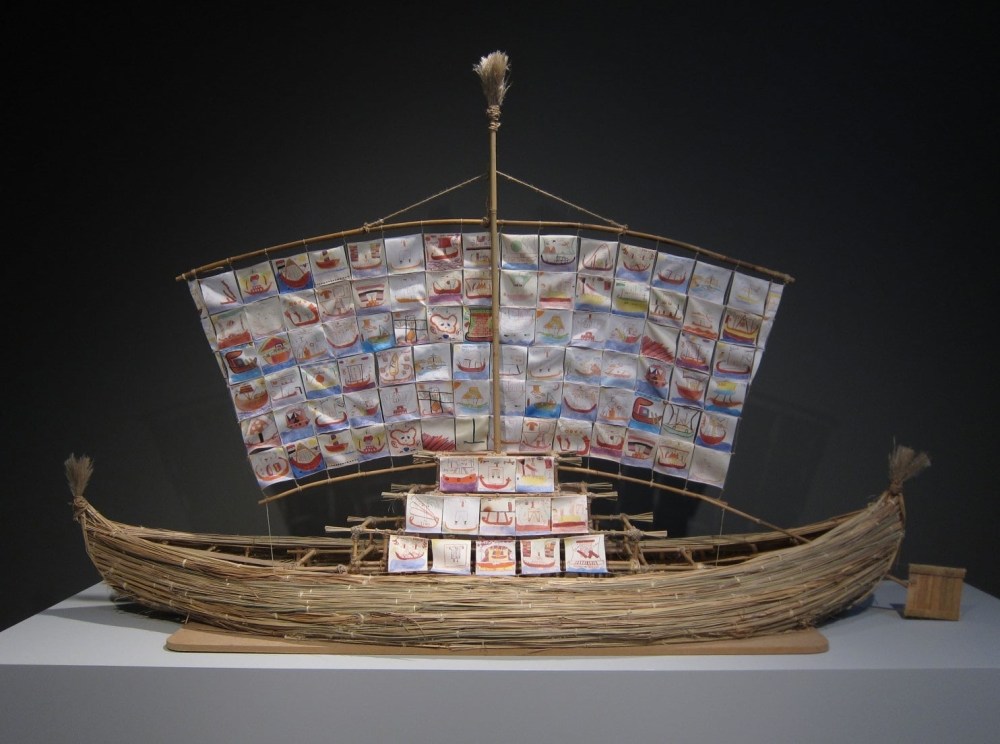
It’s hardly startling to learn that Ilya Kabakov, half of the Ukrainian-born husband-and-wife duo whose conceptual artwork is currently at Hemphill Fine Arts, began his artistic career as a children’s book illustrator. The exhibition features pleasant drawings and simple messages, as well as a nook with a mattress where a child might curl up to nap, watched over by 3D illustrations mounted low on the wall. But if Ilya and Emilia Kabakov like domestic art, they’re less keen on domestic scale. “Kabakov” includes several proposals for large monuments and takes inspiration from V.I. Tatlin, a Soviet artist whose 1919 “Monument to the Third International” became a huge deal without ever getting past the model stage.
Like Workingman Collective, whose show preceded this one at Hemphill, the Kabakovs are jokey and yet earnest. They propose erecting “The Large House of Humanity” somewhere in the vicinity of the Washington Monument, and to the same 555-foot height. This massive outline of a mansard-roofed house would align with the Mall’s other landmarks and include a roof-level text, “written on the sky,” extolling Earth as humankind’s home. This 1998 proposal, shown in drawings and a model, recalls the smaller skeletal buildings envisioned by architect Robert Venturi to evoke historical structures. (They were part of his original design for downtown D.C.’s Freedom Plaza, but were not approved.)
Impeccably documented, the project would include a library, concert hall and building for “children’s activities.” Attempting to determine the complex’s proposed location, however, reveals the Kabakovs’ playfulness. They describe the monument’s position very specifically, without really identifying a place at all. “The Large House of Humanity” is of a piece with the model of “The Center of Cosmic Energy,” a supposed ancient site that mimics Tatlin’s monument. Both are detailed, scholarly and impossible, reflecting what Ilya Kabakov calls “the fundamental conflict” between written and visual information.
This disconnect hasn’t prevented the Kabakovs from realizing another of their concepts, “The Ship of Tolerance,” shown here in a model and silkscreen print. The design is based on ancient Egyptian craft, and such a ship was reportedly launched in Siwa, Egypt, in 2005. But dreams of universal harmony ultimately seem less central to the couple’s art than escaping into reverie and play. “Golden Apples” proposes a sculptural grouping of men in trees, throwing fruit at passersby on the ground. And “Return to Happiness” presents a formula for pretending to be a kid, because “in our everyday life, as a rule we feel miserable.” There is a fundamental conflict, in other words, between grown-up living and childlike imagining.